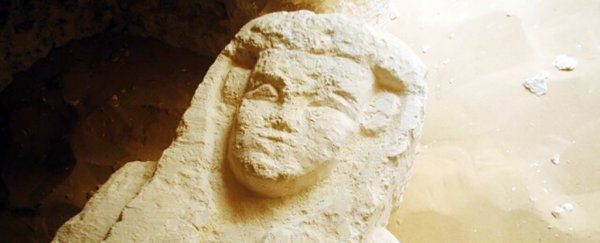No one did tombs like the ancient Egyptians, and archaeologists have just discovered three new ones in northeast Egypt, all more than 2,000 years old.
The finds are set to provide experts with a treasure trove of new artefacts, including bones, clay fragments, and even several sarcophagi of differing sizes that will shed more light on how the people of the area both lived and died.
An analysis of the clay fragments puts the date of the burials in these tombs in a period of time stretching for several centuries, between the the 27th Dynasty (525 to 404 BC) and the Graeco-Roman era (332 BC to 395 AD).
"This fact suggests that the area was a large cemetery over a long period of time," head of the Ministry of Antiquities' Ancient Egyptian Sector, Ayman Ashmawy, told Ahram Online.
Excavation work has been going on at the site in Al-Kamin Al-Sahrawi, near the city of Samalut, since 2015. Cairo is about 200 kilometres (125 miles) to the north.
 Credit: AFP
Credit: AFP
What's interesting is that the new tombs aren't like the 20 discovered at the site so far, which all followed the same catacomb style prevalent during the 27th Dynasty.
The new tombs have perpendicular burial shafts at 90 degrees to the rest of the tomb, with spaces for sarcophagi and burial holes. Six sarcophagi, a wooden coffin, and 15 burial holes have been discovered so far, with excavations still happening in the third tomb.
Of course the ancient Egyptians are well known for their stone coffins or sarcophagi, often carved with human features to represent the dead person laid out and mummified inside. These final places of rest had to be purchased in advance though, so many made do with something more humble.
The act of mummification and the burial of possessions were intended to help the passage to the afterlife, with the appropriate purifications of the body and homage to the gods given along the way.
All of these meticulous preparations mean archaeologists can get a fascinating look at the remains that are left behind, with researchers describing the new discoveries as "very important" for researchers.
The bones recovered from the three tombs so far seem to be from men, women, and children of various ages, suggesting these sites are part of larger public cemeteries rather than military garrisons.
While it may not be the most spectacular find in recent history in Egypt, it shows the care and consideration the ancient Egyptians took over burial, with these tombs and sarcophagi lasting for thousands of years after the original souls have departed.
Back in May, the same team came across 17 mummies stored in desert catacombs nearby, which was described as an "unprecedented" find at the time. Sarcophagi and two papyri sheets were also discovered.
With plenty of excavation work still do to at the site, it's likely that archaeologists can look forward to more discoveries at Al-Kamin Al-Sahrawi, and we're looking forward to see what gets unearthed next.
